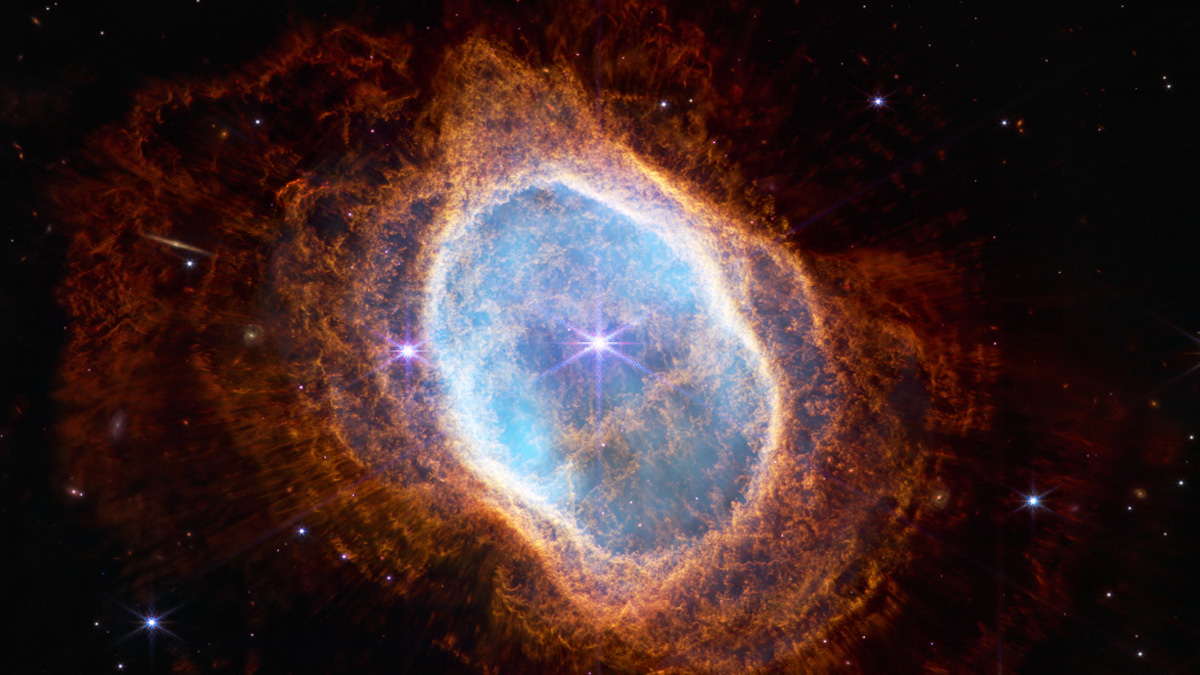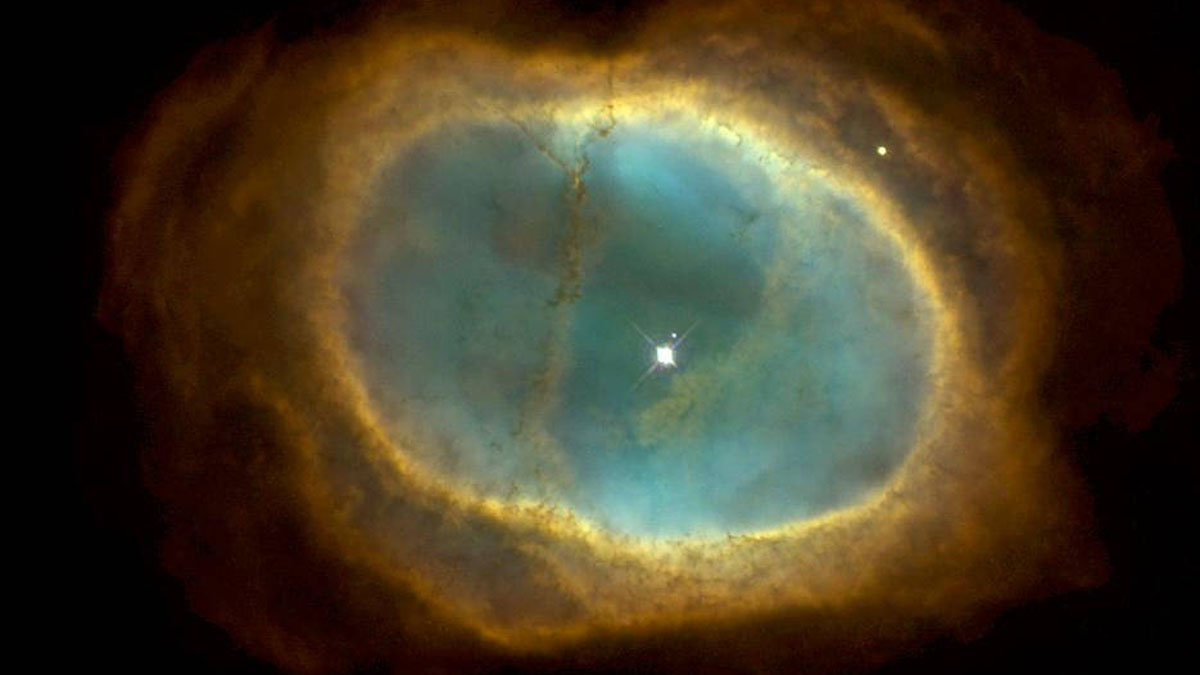When astronomers first saw spectacular snapshots of the Southern Ring Nebula acquired by the James Webb Space Telescope, they understood they would have to rethink what they thought they knew about the unremarkable object.
Located some 2,000 light-years away from Earth in the constellation Vela, which is visible in the southern sky, the Southern Ring Nebula was among the James Webb Space Telescope‘s early science targets, and a portrait was among the images famously revealed to the world in July. The nebula, also known as NGC 3132, had been previously imaged by Webb’s predecessor, the Hubble Space Telescope. But Hubble’s photographs, while stunning, failed to convey the whole truth about this dust cloud, which sprang up from an implosion of a dying star about the size of the sun merely 2,500 years ago.
“The Southern Ring Nebula was never considered too remarkable,” Orsola De Marco, an astrophysicist at Macquarie University in Australia and a lead author of a new paper exploring Webb’s images, told Space.com. “The nebula was known for having an extended envelope and for housing two visible stars orbiting each other.”
Related: Why the James Webb Space Telescope’s amazing ‘Pillars of Creation’ photo has astronomers buzzing
The Southern Ring Nebula is a so-called planetary nebula, which despite its name has nothing to do with planets and instead is the product of the implosion of a red giant star. When a star somewhat bigger than the sun runs out of hydrogen fuel in its core, it swells into a red giant, which can be hundreds of times wider than the original star. Eventually the red giant sheds its outer layers (which then form the nebula) and contracts into cooling remnants called a white dwarf.
In the images from Hubble, the shed layers form a rather smooth ring-shaped cloud, while the white dwarf can be seen as a small speck of light at the center of the ring, outshone by a much brighter, still fully alive, companion star some 1,300 sun-Earth distances away.
Webb provided a more complex view of the nebula. The telescope of the century imaged the cloud with two of its instruments, the Near Infrared Camera (NIRCam), which sees warmer objects such as stars, and the Mid-Infrared Instrument (MIRI), which is a champion at spotting dust.
It was MIRI’s view that immediately sparked the astronomers’ interest. Instead of the one large and one tiny star known from Hubble’s view, two stars of equal sizes emerged. And strangely, the star that the astronomers knew as the white dwarf was unexpectedly red.
“White dwarfs are hot, they don’t shine in this wavelength,” De Marco said. “So, immediately, we knew that there must be a lot of cool dust enshrouding the white dwarf, there is a cool disk of dust.”
Immediately the astronomers wondered how the dust disk came into being. Such disks are usually made of material from a smaller star orbiting a more massive star, whose gravity disturbs the companion. But the known bright companion of the white dwarf at the center of the Southern Ring Nebula was too far away to be affected by the white dwarf. The only plausible conclusion, De Marco said, was that another, invisible small star was orbiting the white dwarf much closer in, releasing the dust. The system of two stars suddenly became a system of three.
But the surprises didn’t end there.
Under Webb’s penetrating gaze, the relatively smooth surface of the ring-shaped cloud seen by Hubble, turned into a mass of swirling streams and dust filaments. One feature especially caught the astronomers’ eyes: concentric layers spreading outward toward the ring’s edges like ripples in a pond. Astronomers have seen such concentric shells before, including in Webb’s images of the nebula surrounding a giant star known as WR140.

“There are many nebulas with arches like that,” De Marco said. “There’s been a lot of work done on modeling of where [the arches] come from, and the only successful model is that you have an orbiting companion, and when the star ejects the nebula, the nebula streams past the orbiting companion that acts like a sprinkler and creates a spiral that is ingrained into the expanding nebula.”
By measuring the distance between the concentric rings, astronomers can learn a lot about the companion star that created the structures, De Marco added, including its distance from the white dwarf whose ejected envelope created the nebula. The distance calculation suggested that neither of the two companions, the visible one and the one responsible for the dusty disk, could have caused the ripples. A third star, somewhere in between the two, was added into the system.

The unremarkable nebula that nobody had been excited about suddenly became much more interesting. And it still wasn’t over: Further investigations of the nebula’s shape revealed even that a fifth star may be hiding within the dusty disk close to the white dwarf.
“We think all that gas and dust we see thrown all over the place [in the Southern Ring Nebula] must have come from that one star, but it was tossed in very specific directions by the companion stars,” Joel Kastner, an astronomer at the Rochester Institute of Technology in New York and one of the study’s co-authors, said in a statement (opens in new tab).
The unexpected discovery of the hidden stars shows just how potent Webb is in unlocking the secrets of our universe.
The research is described in a paper (opens in new tab) published Thursday (Dec. 8) in the journal Nature Astronomy.
Follow Tereza Pultarova on Twitter @TerezaPultarova. Follow us on Twitter @Spacedotcom and on Facebook.

